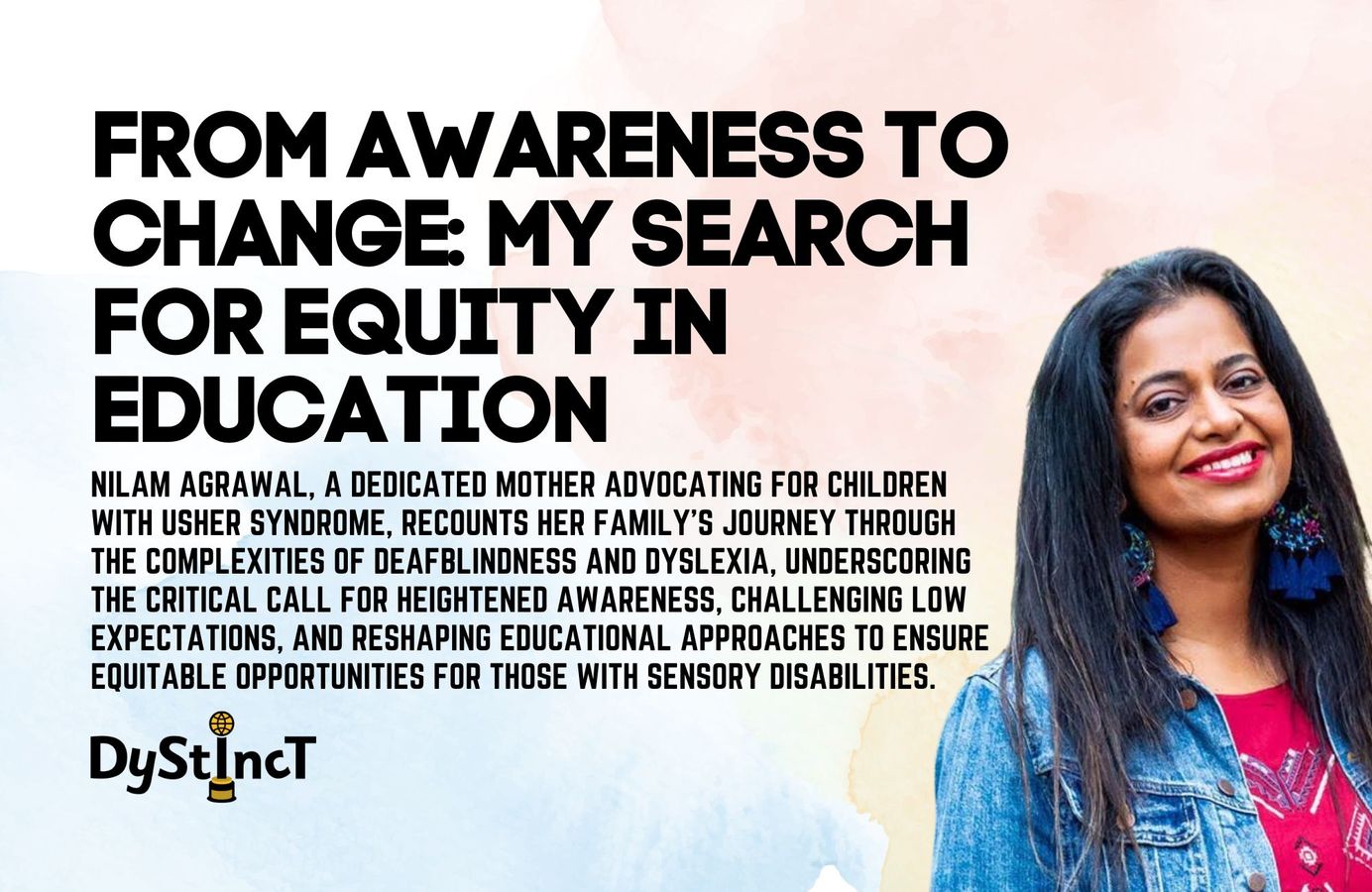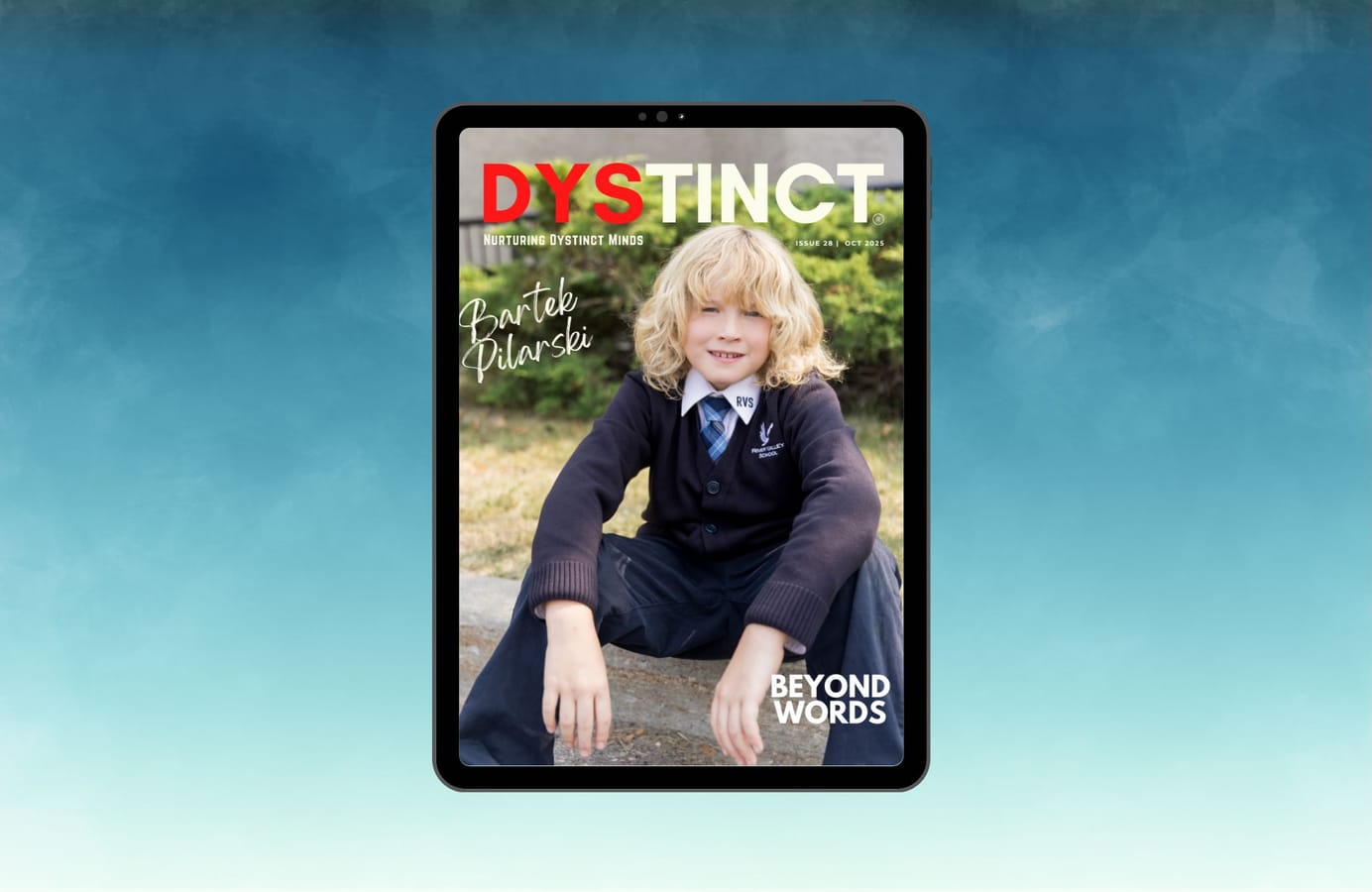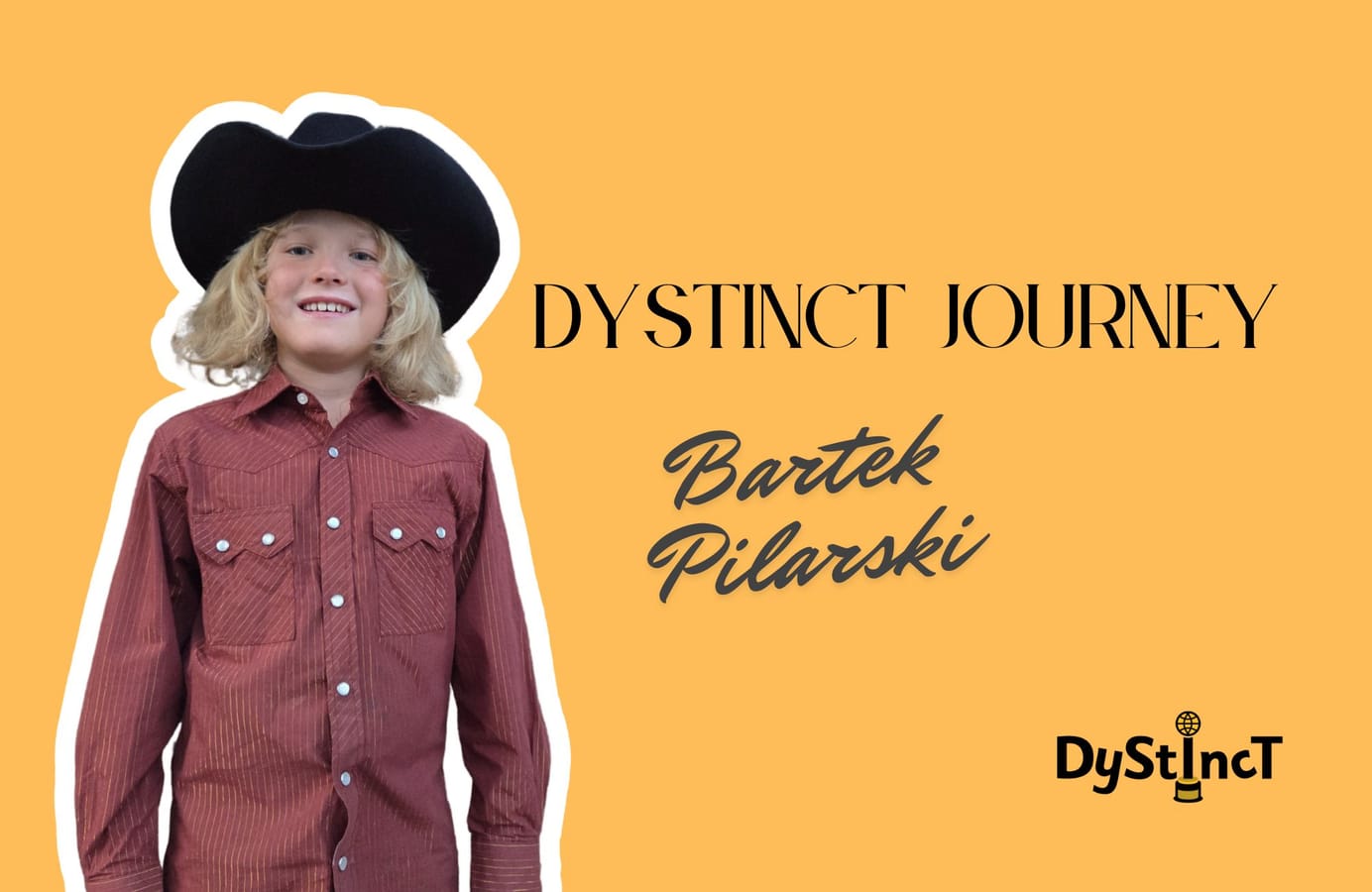
Issue 18: From Awareness to Change: My Search for Equity in Education | Nilam Agrawal
Nilam Agrawal, a dedicated mother advocating for children with Usher syndrome, recounts her family's journey through the complexities of DeafBlindness and dyslexia, underscoring the critical call for heightened awareness, challenging low expectations, and reshaping educational approaches.
The month of October holds a special significance for my family. It is a time when we come together to celebrate Disability Employment Awareness Month, Blind Awareness Month, and Dyslexia Awareness Month. These events celebrate three life experiences that embody my passion and are the essence of my existence.
I am the proud mother of two children diagnosed with Usher syndrome, a rare genetic disorder that causes progressive hearing and vision loss. Both of my children are deaf and wear bilateral cochlear implants. My youngest also has low vision (legally blind) and dyslexia, which was identified when she was 11 years old. She is a large print reader.
I am often met with raised eyebrows whenever I mention DeafBlind and dyslexia together. This constant reaction motivates me to continue speaking up for the need to expand the understanding of low vision, deafness, and dyslexia.
Understanding the Disability Spectrum
Understanding the Disability Spectrum
Blindness is a spectrum, much like many other disabilities. As per Perkins School for the Blind, only about 10-15 percent of people who are blind see nothing at all. The rest have some form of residual vision. Legally blind people can see colors, shapes and varying degrees of light. They can also read large prints. Not all low vision or blind people read Braille, just like not all deaf people use sign language to communicate. It is a very famous saying in our community that when you meet one DeafBlind child, you have met just one DeafBlind child. It's a huge disservice to the children when we try to look at them from the cookie-cutter lens of what their disability should look like and how it should be addressed.
The Unique Challenges Faced by Children with Sensory Disabilities
(Deaf, Hard of Hearing, Blind, Low Vision, DeafBlind)
The Unique Challenges Faced by Children with Sensory Disabilities
(Deaf, Hard of Hearing, Blind, Low Vision, DeafBlind)
Even without the comorbidity of dyslexia, most literature, conferences and training talk about the bare minimum literacy needs for our kids with sensory disabilities. This is particularly true for DeafBlind children. One of the sentences from the 2008 guide developed by Perkins School for the Blind titled Deafblindness: Educational Service Guidelines reads -
Often such a child's world extends no further than the reach of her hands; her concepts are therefore very basic and concrete.
These low expectations have a trickle-down impact inside the classroom, thereby making it impossible for kids to get early access to interventions and grade-level literacy efforts when they struggle with acquiring reading and numeracy skills. It is very common for parents and children to hear, 'it is expected for a deaf or a blind person to struggle with literacy.' 'Deaf kids are not expected to read beyond 4th grade level.' Imagine the hurdles that our kids have to cross to reach a place where they are treated worthy of high expectations and college and career readiness focused academic skills and instructional support. Imagine the microaggressions in society towards disabled individuals and the long-lasting impact on their confidence, emotional health, and employability, which in turn impacts our economy and country as a whole.
Interconnection of disability biases and struggles with dyslexia eligibility
Interconnection of disability biases and struggles with dyslexia eligibility
If you think non-disabled children with dyslexia have it tough, you have no idea how difficult it is for children who have dyslexia with additional comorbidities. There are challenges in identifying SLD in children with sensory disabilities. However, another contributory reason why kids with sensory disabilities do not get identified with SLD is the inherent low expectations that are built and normalized in our society. I see it happening every day around the world. How many deaf, blind or DeafBlind children do you know who have been identified with SLD and have received evidence-based instructions implemented with fidelity? This is happening even when researchers believe that Specific Learning Disability is the most common disability in children and youth who are D/Deaf or Hard of Hearing (DHH), with dyslexia being the most common type of learning disability (10.7%). Estimates of this cohort range from 25% to 35% (Bruce, DiNatale, & Ford, 2008; Luckner & Ayantoye, 2013) to 40% or greater (Blackorby & Knokey, 2006; Mitchell & Karchmer, 2006), with the case being made that a significant proportion of deaf learners have learning disabilities and other neurological, physical, or psychological issues (Hauser & Marschark, 2008).
Likewise, a study by JN Erin and AJ Koenig indicates that between 14% and 65% of students with visual disabilities also have learning disabilities.
My experience has shown me that there is an urgent need to raise awareness about not only the spectrum of disabilities and the educational rights of children with disabilities but also about the coexistence of dyslexia in our student population of Deaf and Blind children, irrespective of their degree of hearing and vision loss. There is a huge need to expand the conversation to address the lack of representation of children with sensory disabilities in all discussions around Specific Learning Disabilities (SLD) and dyslexia. We need to recognize the long-lasting impact on their quality of life due to failure to adequately support their academic needs. It is about time that we challenge the normalized low expectations that meet an individual who is blind, deaf or DeafBlind whenever they dare to stand up and say: 'Our education is important to us.'
This post is for paying subscribers only
SubscribeAlready have an account? Log in


